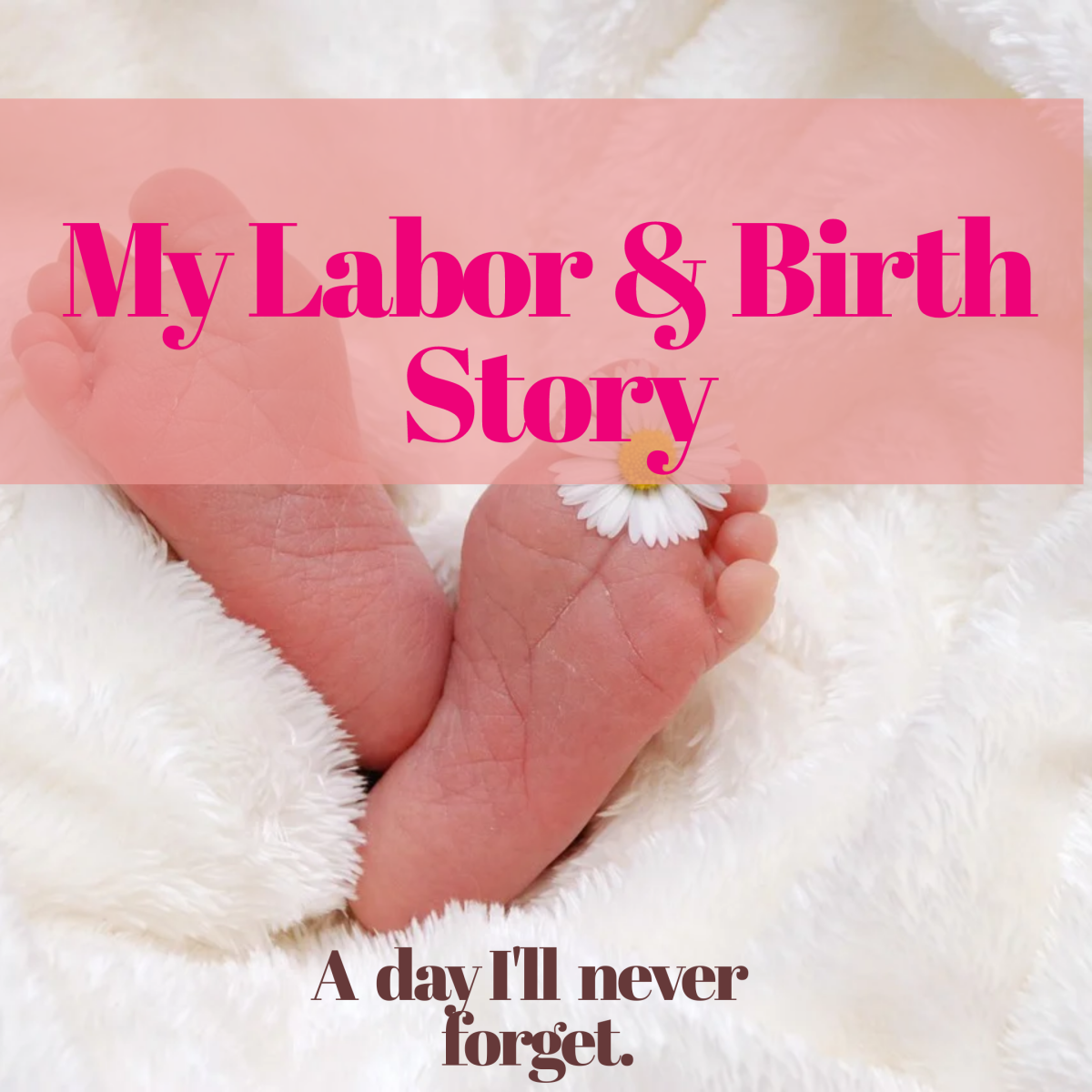- HubPages»
- Health»
- Women's Health»
- Pregnancy
What Is a Doula? What Does a Doula Do?

Should I have a doula at my labour and birth?
I’m a recognised birth and mentored postnatal doula, and my answer to the question above, is… maybe. Its definitely worth considering inviting a doula to support you during you labour, but its true to say that not everyone needs or wants a doula.
The word doula means ‘slave’ in Greek. The word was coined in 1976 by Dana Raphael, to describe women who care for and support women in labour
The doula role has expanded to include postnatal doulas, who support the new family. The role can be as simple as doing the housework and cooking, or as deep as debriefing with the mother her birth experience, answering questions about breastfeeding problems and signposting her towards any further help she may need. Postnatal doulas adopt a flexible approach, attending the new family as little or often as needed, for as long as needed, within the framework of a pre-arranged contract which allows for changing needs, but protects the doula’s need to make a reasonable living, like any other professional.
Birth doulas generally attend the couple two or three times before the due date to build rapport and do the all-important antenatal preparation. The job of the doula in the birth room is to protect the space of the birthing woman which then allows mother nature, and the mother’s instincts and inborn reflexes to do the job.
Physiological birth
The processes of labour and birth are governed by a delicate cocktail hormones, and this immensely powerful, but very delicate hormonal state, can very easily be upset. The hormone oxytocin is released in bursts during labour, and maintains uterine contractions. The body releases endorphins during labour, to help the mother deal with the huge sensations of the contracting uterus.
There are a number of situations which will inhibit the production of oxytocin and clear scenarios which will support the process of physiological birth. This is a birth which occurs in the optimum conditions, without any interference at all. These conditions allow the labour to culminate in the Foetus Ejection Reflex. This is an involuntary reflex where the baby is born after a short series of strong contractions. This is not to be confused with the more typically understood 'second stage' of labour, where pushing is usually directed by an attendent, and is a voluntary action. Due to the nature of this kind of birth, and the fact that it can't occur whilst being directly observed, very few health care professionals will know what this looks like. A sensitive community midwife attending home births, or a doula will be more likely to have been around during this type of birth.
All those attending birth, be they the labouring mother herself, her partner, doula, mother, midwife or physician, would do well to remember these basic requirements of a woman in labour.
Switch the neocortex OFF
It is the old part of the brain which governs these involuntary processes, and in order for it to work at its best, the new part of the brain, or neo-cortex, needs to be switched OFF. Neocortical activity is, to put it simply, thinking. So when a midwife comes into the room where a mother is labouring quietly and asks in a loud and chatty voice, “so, do you know if you’re having a boy or a girl?” or some such conversation, she is disturbing the labour space by requiring the mum to think.
Of course she may simply be trying to establish a rapport with a woman she has never met, while she cares for her during one of the most intimate, important and memorable experiences of the woman’s life, but this initial contact needs to be more subtle. Think gentle touch or silent eye-contact, matching the mother’s breathing patterns and general vibe in order to encourage empathetic communication. Enter the room quietly, and be ready to match your vibration to the mother’s, if she is managing to labour well, don’t disturb this delicate state, protect it. Imagine that you are entering the room of someone who is lightly dozing, and you do not wish to wake them. Mum will look up, and look around her seeking support if she needs to connect with someone, but if her head is down, she may not want eye-contact, is too busy labouring to answer questions, and it is very important that she doesn’t have the feeling of being observed.
So we have established that having to answer direct questions stimulates the labouring woman’s neo-cortex.
Do you feel that your caregivers understood the needs of labouring women, as described here?
Scenarios to AVOID in the labour room
- Letting mother get cold
- Letting the mother get hungry
- Bright lights
- Noise, especially speech
- Fear, the mother’s, and interestingly, other peoples’
- making the mother feel observed
Maybe your cat has had kittens in the past. Can you remember how she prepared herself and what she did in labour? No doubt if you knew she was expecting, you would have done what any good pet owner would do, and made sure she had everything you thought she needed. You will have sought out a box or similar, and made it comfortable and put it close to you so that you could keep your eye on her during the birth.
And no doubt your little pet will have totally ignored the lovingly prepared box and given birth in probably the most inaccessible, inconvenient and out of the way spot possible! This is because mammals such as our household pets are not burdened by an over large neo cortex and behave instinctively. Pregnant mammals will seek out a most private space in which to give birth. Usually cats can be observed prowling about in the days before the birth, seeking out a space in which to do their thing. This feeling of familiarity with their birthing space is important to them, as is the feeling that it is inaccessible by others, as privacy is another vitally important factor.
It can make all the difference to the progress of a labour if those attending can grasp the fact that humans and mammals are inhibited during labour by the feeling of being observed. No wonder so many mums in hospital beds surrounded by strangers and being ‘observed’ by machines as well as humans suffer the frustration of ‘failure to progress’ in labour.
The midwife caring for the labouring woman in hospital will be performing various checks and observations and keeping a written record of them all. She will most likely be caring for other labouring women in other birthing rooms, hopefully at different stages of labour, at the same time. This is why it is very difficult for midwives to provide true continuity of support for one woman in labour… she physically can’t be with the mother at all times.
Of course lots of partners will accompany the mother during labour, and many will report that their hands were crushed during the labour and they were definitely not allowed to leave her side! This is where a doula can help immensely. In a way, the partner is going through the birth with a similar emotional intensity to the labouring woman. He or she has a huge emotional investment in the woman labouring to bring their child earth-side, and partners really appreciate some emotional support themselves. The presence of a doula means that they can pop out the room for a moment if necessary, without feeling that they are abandoning the labouring mum.
Having a caring, experienced motherly figure, who has not got the same emotional investment in the situation as a family member, there for the labour, can have a calming and stabilising effect on the whole event. Some experienced doulas can even calm and support the midwife, who feels the pressure of medical responsibility that the doula is not burdened with.
By adopting an attitude of ‘being’ rather than ‘doing’, the doula focus on putting out a vibration of calm, rather than fear.
How to find a doula
Would you hire a doula?

Oxytocin -vs- Adrenaline
When mammals are fearful, adrenaline is released from the adrenal glands in preparation to either ‘fight’ or ‘flight’ from whatever the cause of the fear. Adrenaline is an antagonist to, and will prevent the production of oxytocin, the ‘love’ hormone which maintains the process of labour. As many small mammals, vulnerable to predators, live in groups, it is advantageous to their survival that fear should spread quickly through the pack to prepare them all for trouble. Science is still not sure of the actual mechanism by which fear spreads, but what is apparent, is that it is contagious. If you are in the emotional space of a person who is releasing adrenaline through fear, your adrenals will respond in sympathy and do the same. This is one of the most important areas of work for the birth doula.
Quite often midwives and attending physicians, due to their caring and concerned natures, may be in a state of anxiety and fear, and may unwittingly upset the ongoing labour in this way. As I mentioned before, though the mechanism of labour is immensely powerful, it is delicate.
So, if you like the idea of having a compassionate, knowledgeable woman supporting you through your labour, start asking around, get googling and find her. And if the idea is not for you, that’s absolutely fine. You are a woman, your body is made to birth the baby you’re carrying just like the chain of women stretching back into history for millennia behind us. All will be as it should be.
Useful links for more information
- Doula UK | The non-profit association of doulas in the UK
Doula UK is the largest association for doulas in the UK. Information about doulas pregnancy, labour and the childbirth year and the find a doula directory. - DONA International – Welcome!
DONA International is the oldest, largest and most respected doula association in the world. Our founders are among the foremost experts on doula care, and DONA International certification is a widely respected measure of quality and professionalism.
This content is for informational purposes only and does not substitute for formal and individualized diagnosis, prognosis, treatment, prescription, and/or dietary advice from a licensed medical professional. Do not stop or alter your current course of treatment. If pregnant or nursing, consult with a qualified provider on an individual basis. Seek immediate help if you are experiencing a medical emergency.
© 2012 Jil Wild Manning








